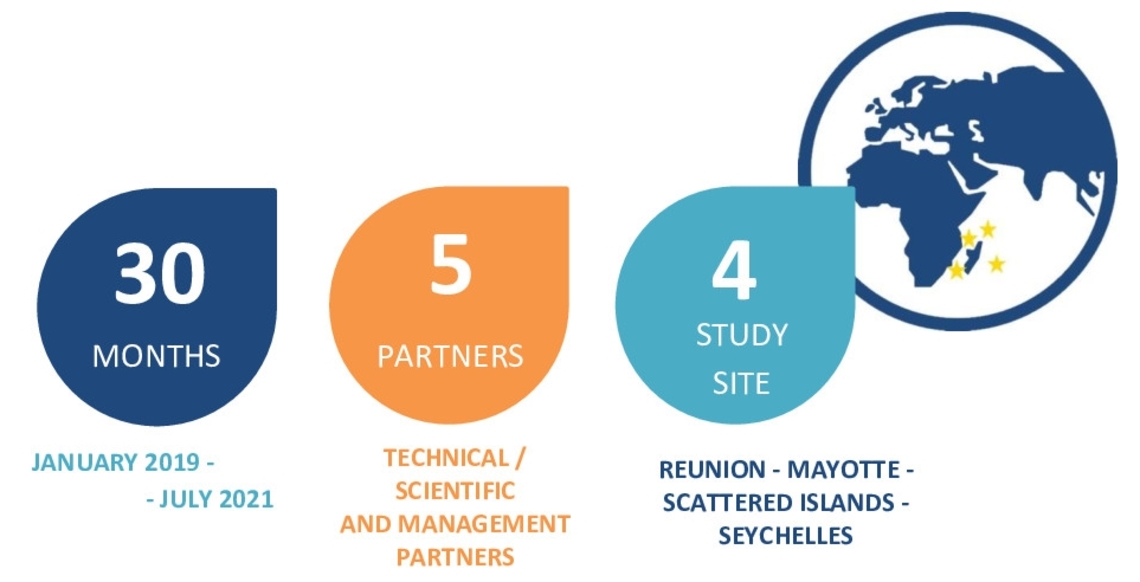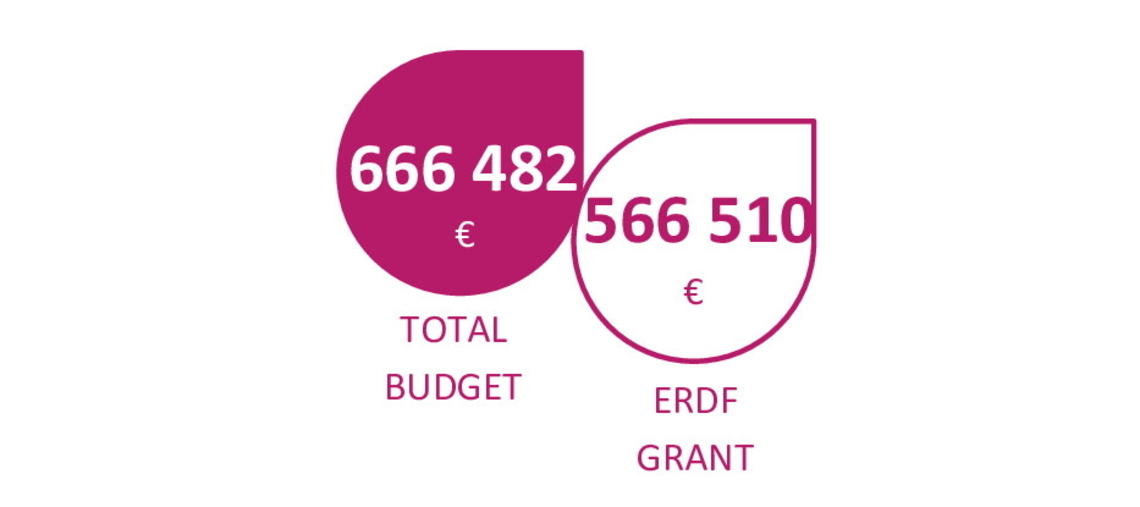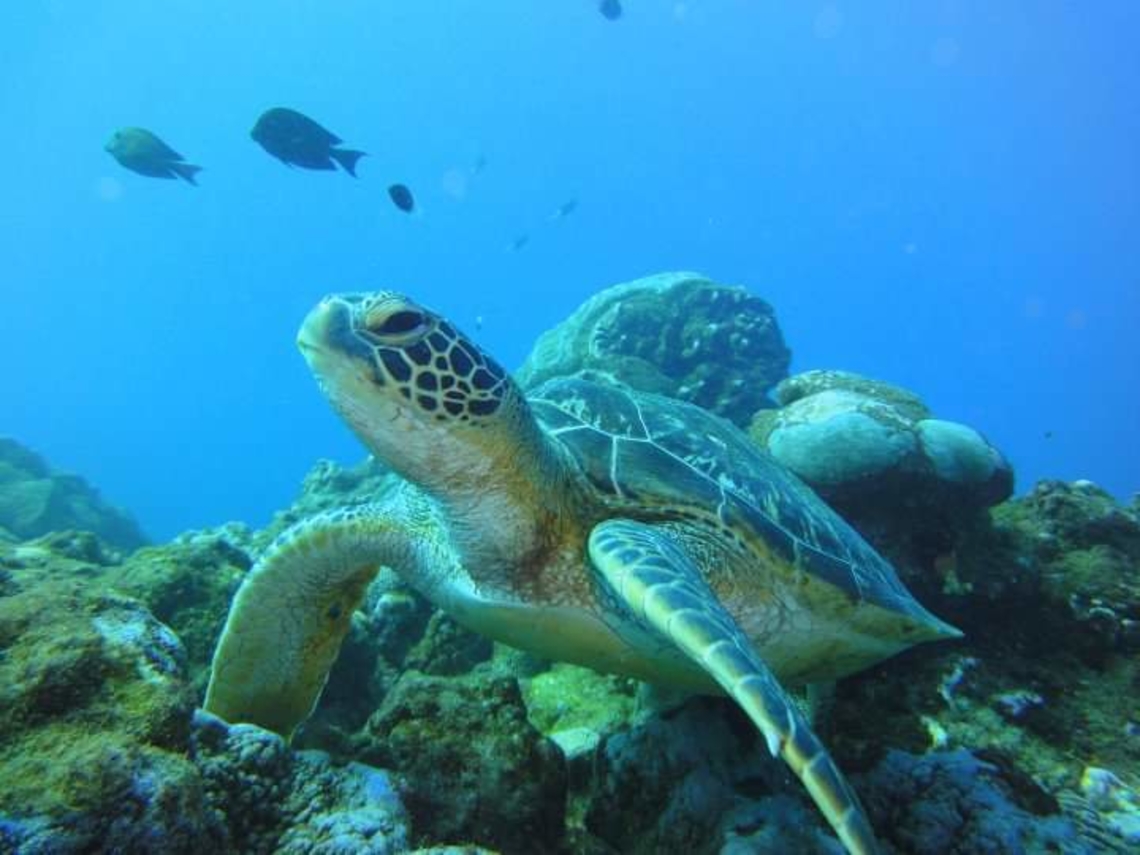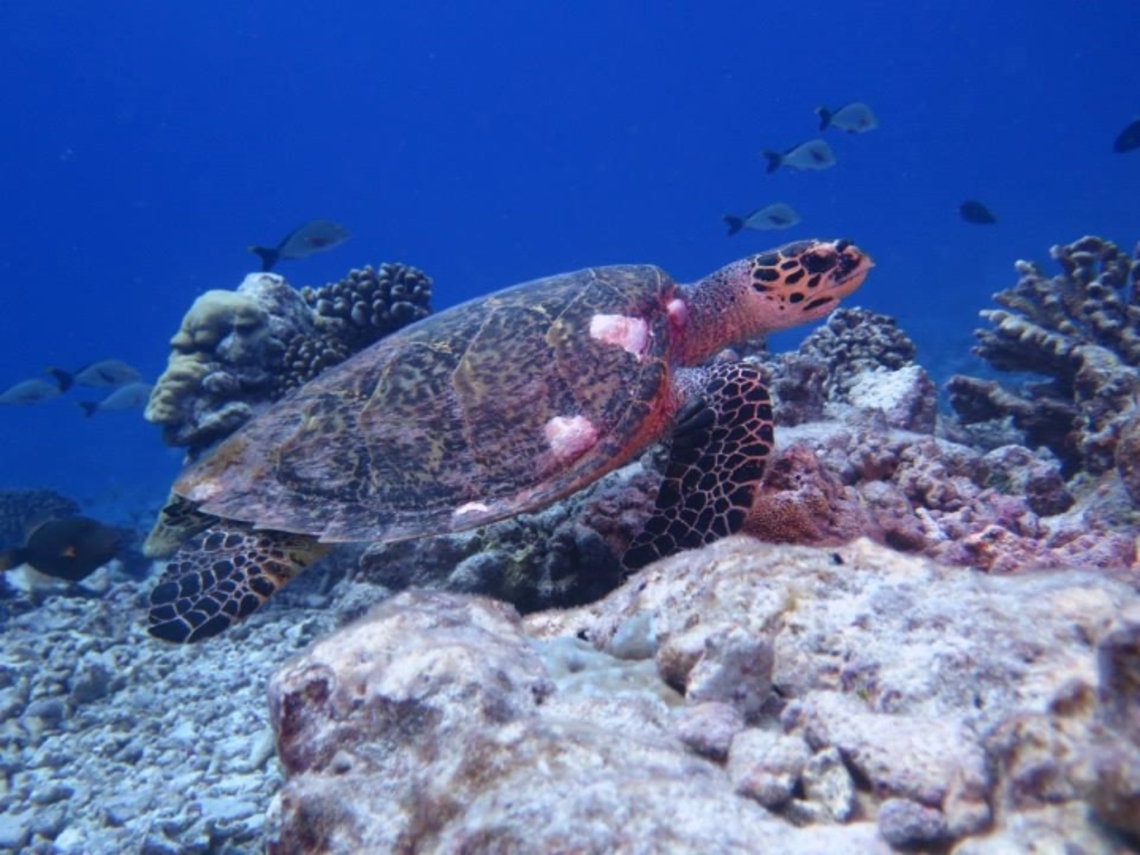Project presentation
Key figures
Project co-financed by the European Union with the framework of the PO INTERREG V Indian Ocean 2014 - 2020
Target species
GREEN TURTLE | HAWKSBILL TURTLE |
Objectives
Increasing anthropogenic and climatic pressures on marine ecosystems raise the question of the sustainability of the exploitation and conservation of these marine ecosystems.
Our knowledge of biodiversity, biology and marine ecology has greatly improved, but it remains very fragmented today because of the complexity of direct observations of the marine environment. This environment is indeed an extreme environment in many respects: most communication systems are inoperative in water, depth and pressure require expensive and constraining technological developments, corrosion represents a major constraint on the durability of observation systems. Finally, the observation scales of marine species and their migration are potentially enormous (several thousand km for marine turtles). Our understanding of the ecology of marine species movement is therefore lagging far behind that of terrestrial animals, and the information needed to make appropriate management decisions is lacking.
The satellite tags used today for wildlife monitoring, including marine turtles, are expensive (> €4,000 per tag), cumbersome, low accuracy and very few technological developments have been made since their first developments in the 1990s. The cost of these tags limits the number of tags that can be deployed and thus the robustness of the resulting quantitative analyses.
The project therefore aims to develop by scientists and for scientists (adapted to their questions) a new generation of tags for marine animals by significantly reducing their price and based on new data transmission systems. The system chosen for this project is the LoRa (Long Range) transmission system based on the Internet of Things technology. In addition to the dramatic increase in the number of connected objects surrounding us in recent years, their low cost, low power consumption, these LoRa transmission modules have the ability to transmit data 20 km away under ideal conditions and determine the position of objects when the GPS system is inoperative using a network of receiving stations that triangulate the position of the signal transmitted for the objects.
The objective of the IOT project is therefore to develop the first marine turtle movement observation network on the scale of the south-western Indian Ocean basin through regional scientific cooperation, by developing a new generation of innovative, low-cost and open source tags and receiving stations.





